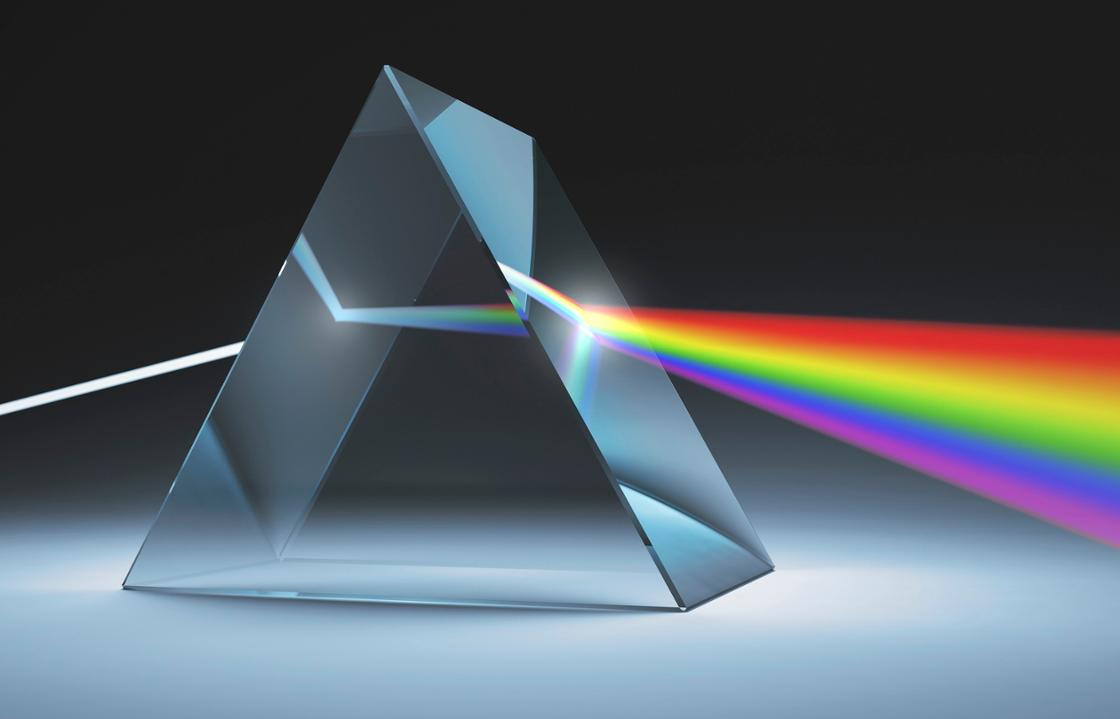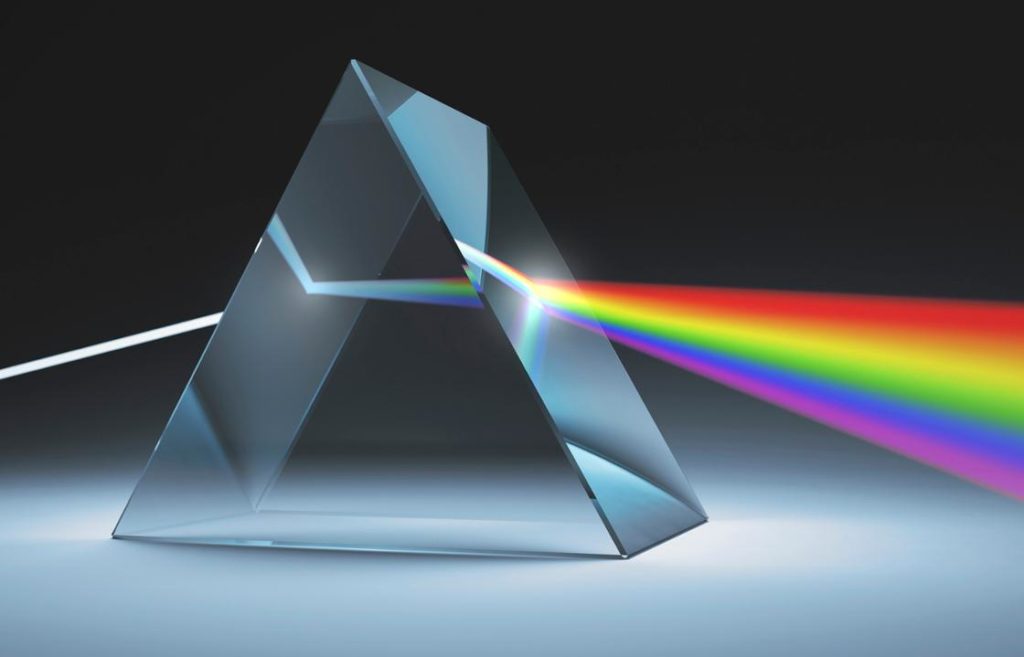
Light Prism
Light is composed of a spectrum of colours, each with its own frequency. Using a prism to split the light is one technique to perceive the spectrum of colours.
A prism is a triangular glass or perspex block that divides light into its component colours.
Light is refracted when it enters a prism. Each colour of the spectrum is refracted differently, causing the colours to be distributed (spread out) and visible to you.
A prism is an excellent visual aid for demonstrating that white light is made up of seven distinct colours.
This is an amazing technique to split light with a prism on a sunny day.
Components:
- Dark cardboard
- White paper
- Prism
Working Principle:
A prism is a transparent piece of glass or other material with precise angles and plane faces that can be used to analyse and reflect light. A simple triangular prism can separate white light into its component colours, which is referred to as a spectrum. The glass slows down light waves and affects some light colours more than others depending on their wavelengths.
The shorter wavelengths (those toward the violet end of the spectrum) are bent the most, while the longer wavelengths (those toward the red end of the spectrum) are bent the least.
This type of prism is found in spectroscopes, which are tools used to analyse light and determine the identity and structure of materials that emit or absorb light.

When white light passes through a prism, it is twisted, or refracted, and separated into its constituent wavelengths. Each light wavelength has a distinct colour and bends at a different angle. Red, orange, yellow, green, blue, indigo, and violet are the colours of white light that always emerge in the same sequence through a prism.
Internal reflection allows prisms to reverse the direction of light, making them useful in binoculars.
Instructions:
- Place the white sheet of paper on the table
- Make a slit in a sheet of dark cardboard and place it such that a small ray of light shines through it.
- Place the prism in front of the light and rotate it till the light is split into the spectrum of colours. The white light that enters the prism is a mixture of distinct frequencies that are bent (refracted) differently through the prism and can be seen independently.
Links:
https://www.britannica.com/technology/prism-optics
https://www.science-sparks.com/rainbow-with-a-prism/